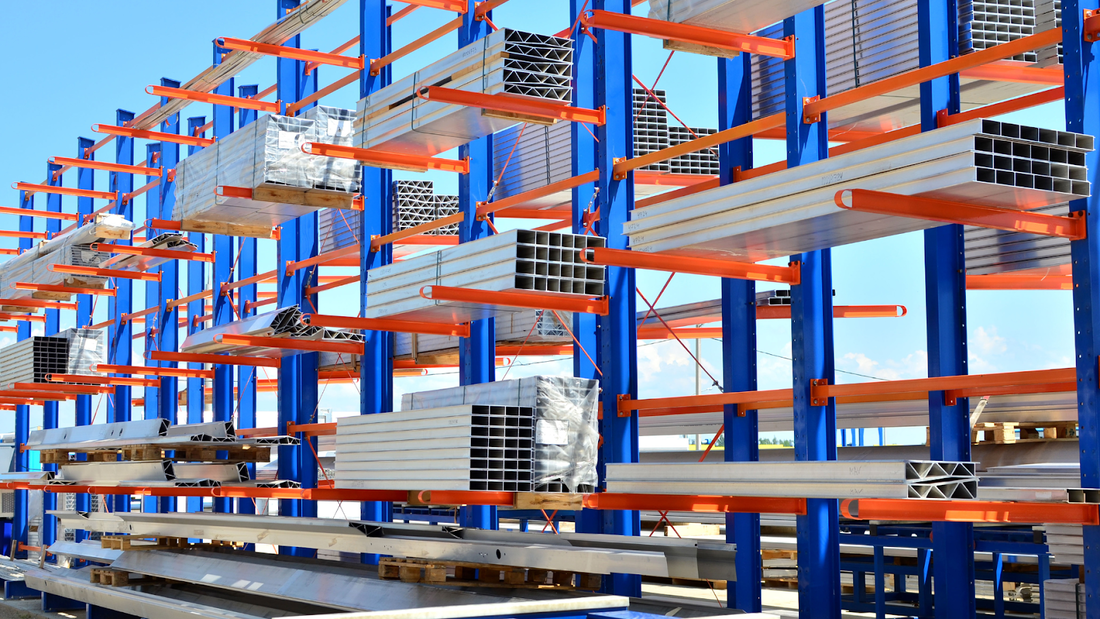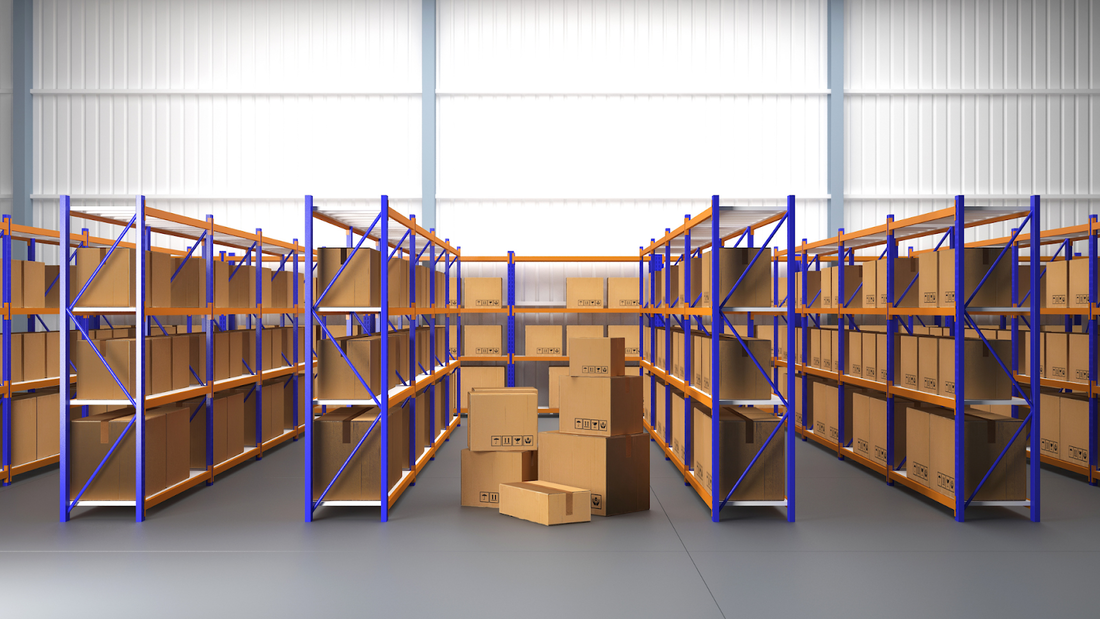Key Takeaways
- Versatility in Racking Choices: Dallas warehouses can optimize storage by selecting from various racking systems like selective, drive-in, pushback, pallet flow, and cantilever—each catering to different types of inventory and operational needs.
- Design and Compliance: Aisle width, rack height, and building permits are integral to racking design, affecting everything from safety to storage efficiency. Regular inspections and adherence to compliance regulations are mandatory for a smooth operation.
- Scalability and Maintenance: Future-proofing your investment is possible with adjustable and expandable racking systems. Ongoing maintenance and awareness of when to repair or replace are key to long-term warehouse efficiency. To further elevate your warehouse's productivity and efficiency, consider Space Maker Designs' expert shelving solutions. Their tailored approach ensures optimal space utilization and streamlined operations, essential for thriving in today's competitive market.
Selecting the right racking system is crucial for an efficient and productive warehouse, especially in a dynamic environment like Dallas. It's not just about storage; it's about creating a system that meets the rapid demands of your business while maintaining safety and adhering to local regulations. For maintaining and repairing your warehouse racks, Space Maker Designs offers cost-effective solutions with their Rack Repair Kits. These kits are designed to restore the structural integrity of your racks, ensuring safety and efficiency in your operations.
Understanding Your Warehouse Requirements
Before diving into the myriad of racking options, it's crucial to have a clear understanding of your warehouse's specific needs. This is not a one-size-fits-all scenario, and the better you understand your requirements, the more effectively you can tailor your racking solution.
Assessing Space And Volume
The physical limitations of your warehouse space in Dallas will largely dictate the type of racking system you can implement. Ceiling height, floor space, column spacing, and loading docks all play a part in what you can do with your space. It's about balancing the volume of goods you need to store with the space available, considering both horizontal and vertical dimensions. Also, think about the accessibility required for forklifts and other handling equipment, as well as the ease of access for picking and restocking inventory.
Analyzing Inventory Throughput
How quickly does your inventory rotate? The rate at which you move goods through your facility impacts which racking systems will be most efficient. High-throughput environments may benefit from dynamic racking solutions that facilitate faster access and restocking, while slow-moving or seasonal items might be better stored in denser, static systems.
Planning For Growth And Scalability
While your current needs are important, don't forget to plan for the future. Flexibility and scalability should be key considerations in your racking decision. As your business in Dallas grows, your racking system should be able to adapt without requiring a complete overhaul. Look for modular options that can be expanded or reconfigured as your warehouse operations evolve.
Optimize Your Warehouse Now
- Tailored Solutions: Find racking systems that fit your business needs with Space Maker Designs.
- Expert Guidance: Leverage our industry expertise for a compliant, efficient warehousing setup.
- Long-Term Success: Secure a scalable racking infrastructure that grows with your Dallas business.
- Ready to transform your storage space?
- Connect with Space Maker Designs today!
Types Of Warehouse Racking Systems
An array of racking solutions exists, each designed to address specific storage needs and operational strategies. Knowing the strengths and applications of each will guide you in selecting the ideal setup for your Dallas warehouse.
Selective Racking - The Versatile Standard
Selective racking is a go-to for many due to its versatility and ease of access. Each pallet is accessible without needing to move others, making it a suitable choice for a wide variety of goods, especially if you have a large SKU count with lower volumes per SKU. This type of racking is straightforward to install and reconfigure, offering a blend of density and accessibility.
Drive-In/Drive-Thru Racking For High-Density Storage
Drive-in and drive-thru racking systems are designed for warehouses that contain large quantities of similar products. This setup allows forklifts to drive directly into the rack to load or retrieve pallets, which is great for high-density storage. Drive-in racking has one entrance and exit point, making it a last-in-first-out (LIFO) system, while drive-thru has entry points at both ends, allowing for a first-in-first-out (FIFO) inventory rotation.
Pushback And Pallet Flow Systems
These dynamic storage solutions are engineered to increase storage density while maintaining selectivity. Pushback racking lets you store pallets 2 to 5 deep on carts that slide backwards as more cargo is loaded. Pallet flow systems use gravity rollers to move pallets from the loading end to the retrieval end and can store deeper lane depths. Both systems work well for time-sensitive products due to their automatic stock rotation.
Cantilever Racking For Long Or Bulky Items
When it comes to storing long, bulky, or irregular-shaped items like timber, steel bars, or piping, cantilever racking is your best bet. It's designed with arms that extend from a central column, providing an unobstructed storage shelf that can be easily adjusted to fit the size of the items being stored. This racking type accommodates a wide range of item lengths and weights, offering flexibility and easy accessibility.
Material And Load Considerations
Selecting the correct materials and understanding load capacities are key factors in ensuring your warehouse racking system is safe, durable, and appropriate for your inventory.
Weight Capacities And Material Durability
Warehouse racking must be robust enough to safely hold the weight of your stored goods. Each racking system has its own load capacity, which you must not exceed to maintain safety and structural integrity. The materials from which your racks are made, often steel, contribute to their durability and weight-bearing ability. Check the manufacturer's specifications for load capacity and ensure your design accounts for the heaviest items you plan to store.
Ensuring Safety With Proper Load Distribution
Proper load distribution is crucial to prevent accidents and rack collapses. You need to understand the distribution of weight across your racking units and plan for even weight distribution. Incorrectly loaded racks can lead to structural failures, posing serious risks to workers and inventory. Regular inspections and training for staff on proper loading techniques will help maintain a safe working environment. Additionally, consider the impact of forklift operations on the rack's structural stability, and allow for ample aisle space to maneuver goods without risking damage to the racking.
Legal And Compliance Factors
Adhering To Dallas Building Codes
Compliance with local building codes is non-negotiable when installing warehouse racking in Dallas. These codes ensure that your racking system is suitable for the building's design and occupancy level. They also cover aspects like fire safety and egress paths. It's imperative that you understand Dallas-specific requirements, as non-compliance could result in fines or shutdowns. Prior to installation, consult with local authorities or a compliance expert to review your racking plans.
Osha Regulations And Racking Safety
The Occupational Safety and Health Administration (OSHA) sets national guidelines for workplace safety, which include regulations for the safe design, construction, and maintenance of warehouse racking. Ensuring your racking system adheres to OSHA standards will help prevent workplace accidents and injuries. This includes regular inspections, load management, and damage control. Employee training on safe practices is also essential. Staying compliant not only ensures employee well-being but also protects your business from liability.
Maximizing Warehouse Space Efficiency
Designing For Optimal Flow
An efficiently designed warehouse maximizes both space utilization and operational flow. When selecting racking, consider the movement of goods from receiving to storage to shipping. Well-thought-out racking placement can significantly increase the flow efficiency, reducing the time and labor required for day-to-day operations. Establish clear paths for employees and machinery, minimize congestion areas, and consider incorporating zoning for different types of products. To further enhance your warehouse's efficiency, explore Space Maker Designs' Warehouse Design Services. They offer customized solutions that align with your specific requirements, ensuring a seamless integration of space optimization and operational efficiency.
Racking Layout Considerations
The layout of your racking can make a tremendous difference in space utilization. Analyze your inventory size, shape, and turnover rate to determine the optimal aisle width and rack height. It's also wise to think about picking strategies – whether that's zone, wave, or batch picking – and how the racking layout will support these methods. Strategic racking layouts will ensure a smooth workflow and can greatly improve the overall productivity of your warehouse operations.
Technology Integration In Racking Systems
Advancements In Warehouse Technology
As warehousing enters the digital age, technology plays an increasingly critical role in managing inventory and optimizing space. Consider how technology, such as automated storage and retrieval systems (AS/RS), can be integrated into your racking solution. Although there is a higher initial investment, the long-term efficiency gains may justify the cost for larger Dallas warehouses or those with high volume and velocity.
The Role Of Warehouse Management Systems (Wms)
Warehouse management systems (WMS) offer a high-tech approach to inventory control and can be a valuable tool in your racking strategy. WMS can help manage product location, optimize picking routes, and track inventory levels in real-time, all of which contribute to a more efficient warehouse operation. When choosing racking, think about how WMS can be synchronized with your physical storage solutions to streamline processes and reduce error rates.
Cost Implications And Budgeting
Understanding The Cost Of Different Racking Systems
The price tag on warehouse racking systems can vary widely depending on the type, materials, and customization required. It's important to understand the costs associated with not just the initial purchase, but also installation and potential future modifications. Having a clear budget will guide you toward the racking solutions that offer the best value for your investment.
Budgeting For Installation And Maintenance
Installation costs can be as significant as the cost of the racking itself, so factor this into your budget. Professional installation ensures safety and compliance, but it comes at a price. Post-installation, ongoing maintenance is essential to keep your racking in good condition and prevent costly repairs down the line. Setting aside a maintenance budget will ensure that your racking system remains safe and functional for years to come.
Installation And Implementation
Choosing A Trustworthy Installer
Selecting the right installation partner is as important as choosing the right racking. In Dallas, seek out experienced and reputable installers with a proven track record. They will not only ensure that your racking is installed correctly but will also help navigate any compliance issues. Ask for references, review past projects, and ensure they offer post-installation support before making your decision.
Timeline And Project Management
Setting realistic timelines for the installation and readying your warehouse for operation is key to a smooth transition. Effective project management involves coordinating between suppliers, installers, and your operational team to minimize downtime. Keep open lines of communication with all stakeholders to address any hiccups promptly. Well-managed installations result in less disruption and allow you to get your racking system up and running without significant delays.
Final Thoughts On Warehouse Racking Dallas
Your warehouse's racking system is a vital component of your logistics operations in Dallas. With the right approach to selecting and maintaining your racking, you can create a facility that is safe, compliant, and optimized for efficiency. Consider your current and future needs, weigh the different racking options, and don't hesitate to leverage technology for improved management. With careful planning and execution, your racking solution will serve your business well for years to come.
Frequently Asked Questions About Warehouse Racking Dallas
Can I mix different types of racking in one warehouse?
Absolutely. Combining racking types can customize storage for different inventory needs and maximize space efficiency.
How important is aisle width in racking design?
It's critical. Aisle width determines equipment maneuverability and influences the warehouse's storage density and operational efficiency.
Does rack height affect warehouse operations?
Yes, the height of racks affects the storage capacity, types of equipment needed, and can dictate safety practices.
What should be my first step when considering a new racking system?
Start with assessing your warehouse’s inventory, space, current throughput, and anticipated growth to inform your racking selection.
Do I need a building permit to install new racking in Dallas?
Typically, you do. Always consult with city regulations beforehand to ensure all installations are compliant.
How frequently should racking systems be inspected?
Racking systems should be inspected regularly to maintain safety and performance, with immediate action taken on any signs of damage or instability.
What are some signs that my racking system needs maintenance or replacement?
Be aware of visible damages such as rust, bends, or dents, instability, or any deviations from the original installation condition.
Can I adjust the configuration of my racking system after installation?
Many systems allow for reconfiguration but always check with the supplier or installer to ensure structural integrity and compliance are maintained.
How do I calculate the load capacity required for my racking?
Look at the maximum weight of goods you plan to store and ensure it does not surpass the manufacturer's specified load capacity for the racking.
What project management considerations are there for racking installation?
Organizing a timeline, ensuring clear communication between all parties, and considering potential operational disruptions are vital for timely and efficient installation.



